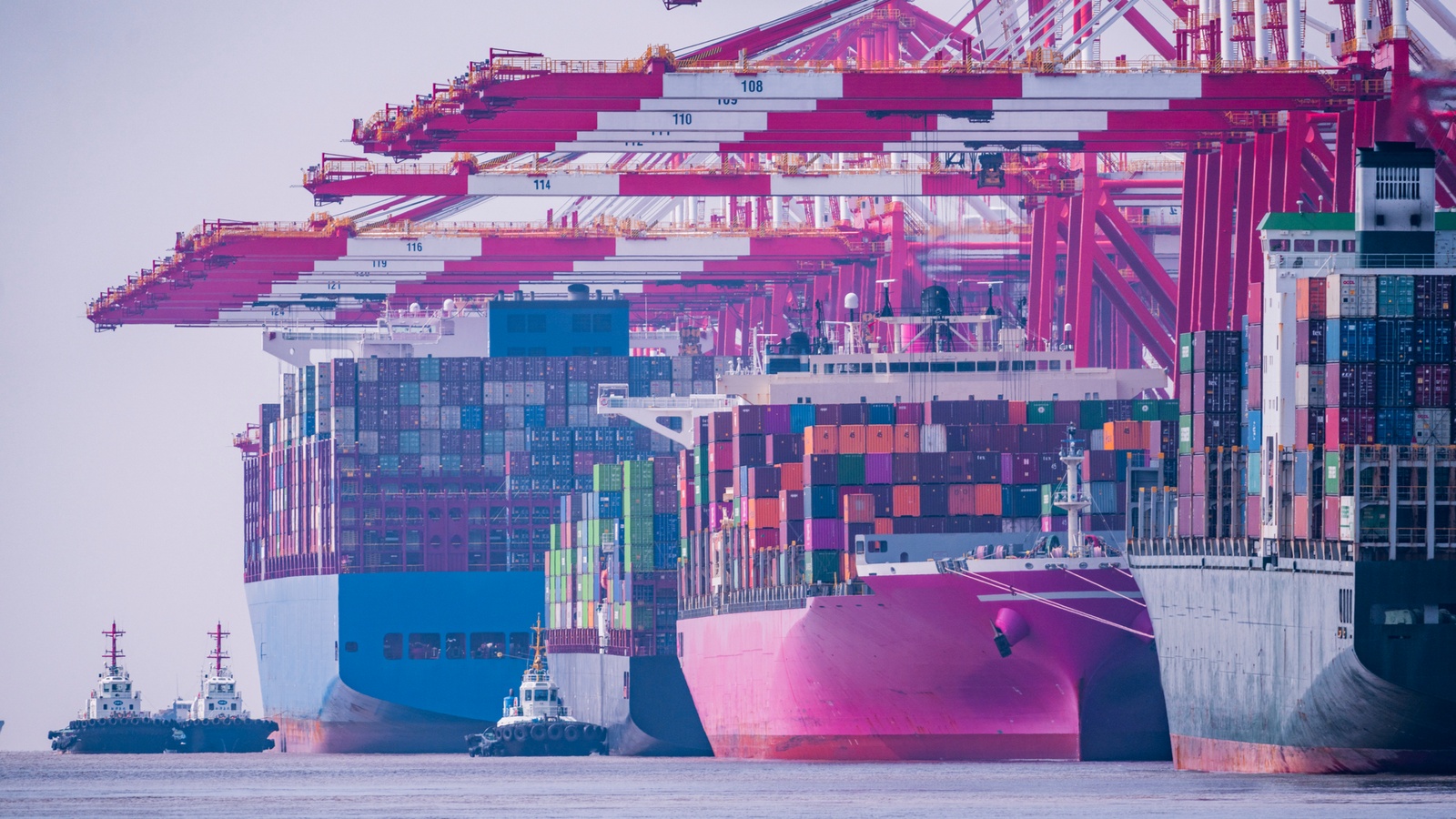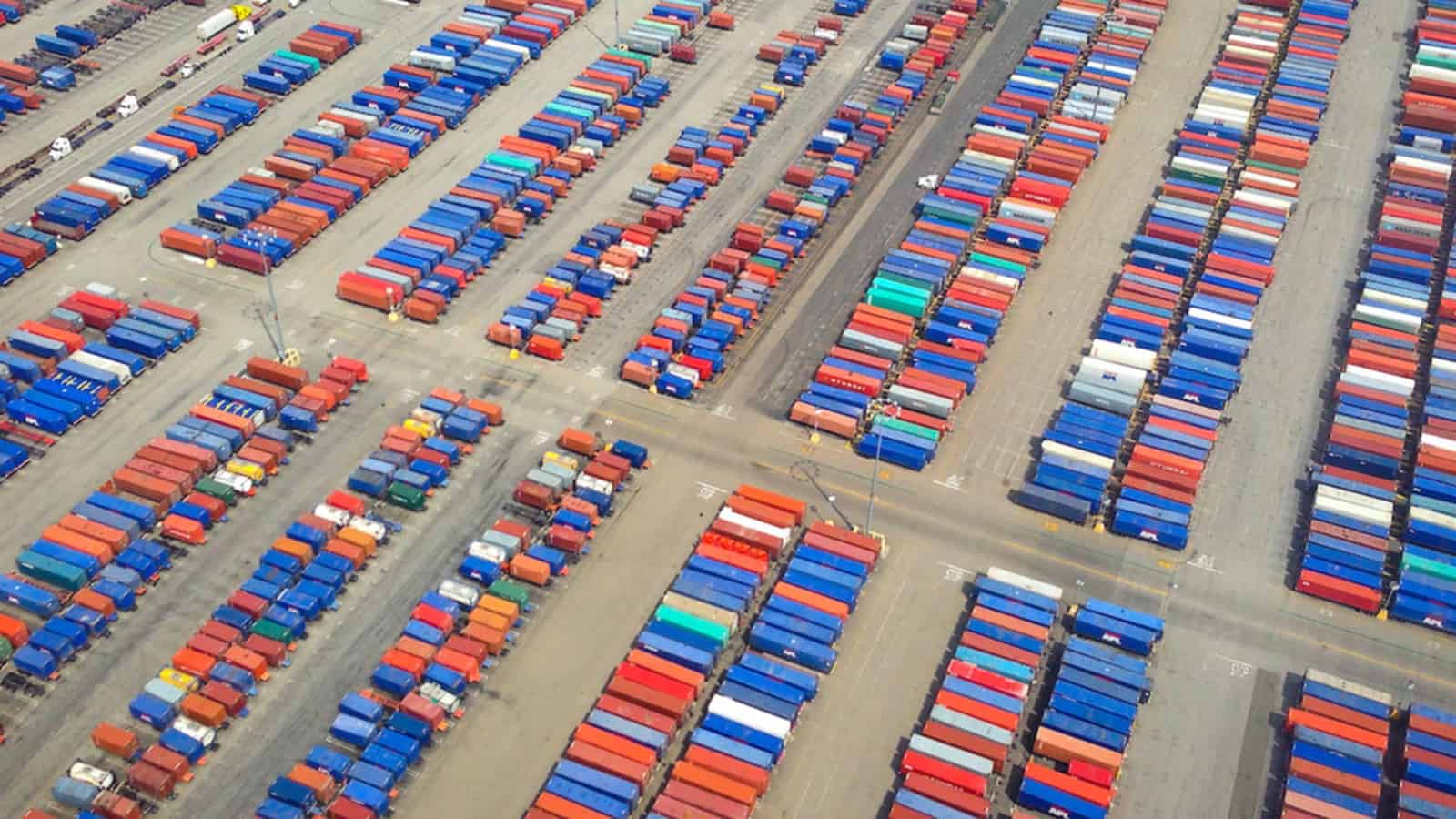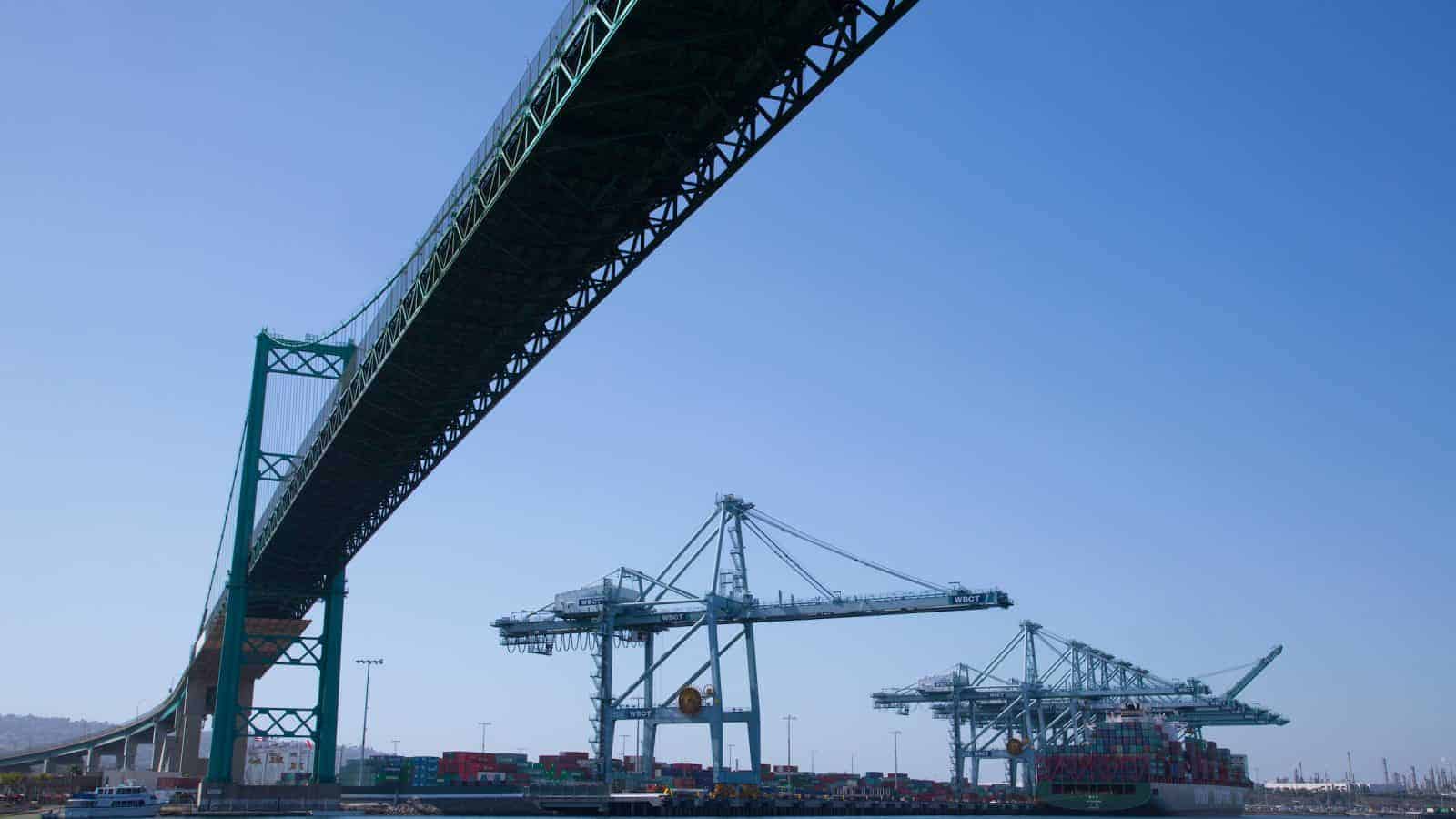Exclusive: Sinema Meets with Manufacturers in Arizona, Talks Policy with the NAM
U.S. Senator Kyrsten Sinema (D-AZ) recently got an in-person look at manufacturing’s success in Arizona on a NAM-arranged tour of Phoenix manufacturer Valley Forge & Bolt. During her visit, which also featured a roundtable with manufacturers from across Arizona, she spoke with the NAM about the successful passage of historic infrastructure legislation without tax increases, the necessity of boosting semiconductor production and more.
- During the roundtable, Valley Forge & Bolt President and CEO Michele Clarke highlighted the direct impact of the 2017 tax reforms on her ability to invest in her facility and workforce. She thanked the senator for standing against future tax increases on manufacturers and for her leadership on infrastructure investment.
The NAM caught up with the senator after the roundtable for an exclusive interview. Here is some of what she said.
Infrastructure in Arizona: “We’ve got over $5.3 billion coming just to improve our roads and bridges in Arizona,” said Sinema. “That’s critical for the work we’re doing to shorten the supply chain. The benefits of this law will be seen for years to come.”
- “It provides a real opportunity for manufacturing businesses in Arizona to be able to utilize this energy and these dollars we’ve created to move forward, attract more companies to Arizona, and become a world leader in manufacturing.”
What’s next? “My number one goal now that this [infrastructure] bill has become law is to make sure that it’s implemented quickly, swiftly, and without bureaucracy,” said Sinema.
- “I want to make sure Arizona is getting its fair share of dollars so that the men and women who are running and working for our manufacturing companies can put these dollars to good use and make sure Arizona retains and grows its status as a domestic manufacturer.”
Creators Wanted: “There’s a need for us to really focus on investment in our education system so that we’re training the highly qualified tradesmen and tradeswomen who can do the work of this domestic manufacturing,” said Sinema. “That’s an area where we have an opportunity to grow, not just here in Arizona but across our nation. To meet this need so we can retain our global independence and competitiveness.”
Chips: “Arizona is already a hub for the microchip and the semiconductor industry; but passing the CHIPS Plus legislation will allow us to triple or even quadruple that investment,” said Sinema. “It’s incredibly important for us—not just for the tax credit and the investment in R&D—but for the tech hubs, for the investment in science, and to help attract more companies to build semiconductors right here in Arizona.”
The last word: “Manufacturing is the bread and butter of our state,” said Sinema. “It ensures that Arizona is a hub to the nation and the entire world in making products that will power our economy for the future.”
Read more: Check out the local coverage of the senator’s visit from the Daily Independent and the Phoenix Business Journal (subscription).
Manufacturers: Legislation Is a Bold, Important Step Toward Ramping Up the Domestic Manufacturing of Essential Inputs
Timmons: Every manufacturer will benefit. But there is more to be done.
Washington, D.C. – Following the House’s passage of the CHIPS-Plus Act, National Association of Manufacturers President and CEO Jay Timmons released the following statement:
“This legislation is a bold, important step toward ramping up the domestic manufacturing of essential inputs used by virtually every part of our industry. Every vote for the CHIPS-Plus Act was a vote for a more competitive manufacturing industry in America. This bipartisan legislation shows that Congress is taking the problems of supply chain disruptions and inflation seriously. Every manufacturer will benefit. But there is more to be done.
“Once President Biden signs it into law, manufacturers will work with lawmakers to build on the momentum and continue our advocacy for important measures that did not make it into the final CHIPS-Plus legislation, including trade measures, anti-counterfeiting protections and other workforce development priorities.
“But if lawmakers are truly serious about competing with China, they will now oppose the tax increases and attacks on pharmaceutical innovation in the latest reconciliation bill proposal, which will certainly lead to continued inflationary pressures. Congress should stay focused on bipartisan solutions, not legislation that weakens our economy and makes us less competitive with other countries.”
-NAM-
The National Association of Manufacturers is the largest manufacturing association in the United States, representing small and large manufacturers in every industrial sector and in all 50 states. Manufacturing employs more than 12.8 million men and women, contributes $2.77 trillion to the U.S. economy annually and accounts for 58% of private-sector research and development. The NAM is the powerful voice of the manufacturing community and the leading advocate for a policy agenda that helps manufacturers compete in the global economy and create jobs across the United States. For more information about the NAM or to follow us on Twitter and Facebook, please visit www.nam.org
New Study: Ports Stoppage Would Be Devastating Hit to Manufacturers’ Competitiveness
Cost Economy Half a Billion Dollars a Day, Destroy 41,000 U.S. Jobs
Washington, D.C. – As negotiations between the Pacific Maritime Association and International Longshore and Warehouse Union near a critical deadline, manufacturers are sounding the alarm about potential economic consequences of a port stoppage if disruption were to occur over two weeks at the ports of Los Angeles and Long Beach, the nation’s largest port complex. According to a study by Inforum Economics, a 15-day disruption would cost the U.S. economy nearly half a billion dollars a day—for a total of $7.5 billion—and destroy 41,000 jobs, including more than 6,100 in manufacturing.
As the industry continues to grapple with historic supply chain challenges, inflationary pressures and rising transportation and energy costs, manufacturers are calling on the parties to reach an agreement immediately to avoid this continued uncertainty.
“The ports of Los Angeles and Long Beach support a major share of cargo relied upon by American businesses and consumers, supporting supply chains across the entire country. With supply chains already stretched thin, inflation at its highest level in four decades and concerns of a recession rising, any disruption would mean a devastating hit to our economy and to manufacturers’ competitiveness,” said National Association of Manufacturers President and CEO Jay Timmons. “The disruption would be felt immediately. Manufacturing jobs will be lost if parts and supplies don’t arrive. New equipment, machinery and products can’t be built when ships are backed up and there is no one available to unload and process cargo. Our overseas customers won’t wait for us to fix these disruptions, either—they’ll simply find other suppliers, weakening U.S. manufacturing competitiveness in the process.
“This is why the Pacific Maritime Association and the International Longshore and Warehouse Union must not allow a disruption at these ports. Manufacturers, our millions of employees and the countless others whose lives and livelihoods depend on the products we make are counting on the PMA and the ILWU to reach a resolution and keep the ports running.”
Background: At the time of publication, the PMA and ILWU are engaged in labor negotiations. The NAM commissioned an analysis using the Inforum LIFT economic model to quantify the impacts of a 15-day closure at the Los Angeles and Long Beach ports. Specifically, it estimates how such a closure would impact U.S. employment, output and income. These ports have experienced historic disruptions and bottlenecks since late 2020, and nearly 84% of manufacturers now list freight and transportation costs as a key driver of inflation.
-NAM-
The National Association of Manufacturers is the largest manufacturing association in the United States, representing small and large manufacturers in every industrial sector and in all 50 states. Manufacturing employs more than 12.7 million men and women, contributes $2.71 trillion to the U.S. economy annually and accounts for 58% of private-sector research and development. The NAM is the powerful voice of the manufacturing community and the leading advocate for a policy agenda that helps manufacturers compete in the global economy and create jobs across the United States. For more information about the NAM or to follow us on Twitter and Facebook, please visit www.nam.org.
Manufacturers Launch Ad Campaign to Protect Manufacturing Competitiveness
Tax Increases Do Nothing to Reduce Energy Costs, Address Supply Chain and Inflation Challenges
Washington, D.C. – Amid historic supply chain challenges and inflationary pressures, along with increasing energy costs, the National Association of Manufacturers is launching a six-figure ad campaign calling on Congress to protect manufacturing jobs by opposing new taxes on the industry, including those meant to punish the very energy manufacturers that are being asked to produce more. The print, radio and digital ads will run in Washington, D.C., and in key states across the country.
“Manufacturers have kept our promises—especially after the 2017 tax reforms—to create jobs, raise wages and benefits and invest in our communities. To keep up this winning record, we need Congress to enact policies consistent with our manufacturing competitiveness agenda. That’s how we’ll strengthen supply chains, expand access to affordable, reliable energy and tamp down inflation. Our industry is ready to keep solving problems and create well-paying jobs—but returning to outdated tax policies will impede our progress,” said NAM President and CEO Jay Timmons.
Background on manufacturing growth following the enactment of tax reform in 2017:
- In 2018, manufacturers added 260,000 new jobs. That was the best year for job creation in manufacturing in 21 years.
- In 2018, manufacturing wages increased 3.1% and continued going up—by 2.9% in 2019 and 3.0% in 2020. Those were the fastest rates of annual growth since 2003.
- Manufacturing capital spending grew 4.5% and 5.7% in 2018 and 2019, respectively.
- Overall, manufacturing production grew 3.2% in 2018, the best since 2010.
The NAM has published research on the impact of rolling back tax reform (study available here and click here for a summary of the study’s findings) and increasing the U.S. Global Intangible Low-Taxed Income (GILTI) tax burden (study available here).
-NAM-
The National Association of Manufacturers is the largest manufacturing association in the United States, representing small and large manufacturers in every industrial sector and in all 50 states. Manufacturing employs more than 12.7 million men and women, contributes $2.71 trillion to the U.S. economy annually and accounts for 58% of private-sector research and development. The NAM is the powerful voice of the manufacturing community and the leading advocate for a policy agenda that helps manufacturers compete in the global economy and create jobs across the United States. For more information about the NAM or to follow us on Twitter and Facebook, please visit www.nam.org.
The NAM Calls on Congress to Help on Energy, Climate

The U.S. needs a unified climate-change strategy that will strengthen our energy security while empowering manufacturers, the NAM told the House of Representatives’ Energy, Climate and Conservation Task Force this week.
What’s happening: The Republican task force is one of seven recently created by House Minority Leader Kevin McCarthy (R-CA) to enact targeted policy solutions to current challenges and guard against future crises.
- Among these are rising energy prices, supply chain instability and a lack of critical minerals—all dilemmas that can be fixed through sound policy, NAM Vice President of Energy and Resources Policy Rachel Jones told the task force.
What can be done: “We welcome the ECC Task Force’s proposals that will address current challenges, including increasing domestic energy production; stabilizing and securing supply chains—particularly domestic production and processing of critical materials, minerals and chemicals; permitting reform that provides regulatory certainty for the development and deployment of projects; and innovation policies that incentivize an all-of-the-above energy approach rather than picking winners and losers,” Jones said.
Why it matters: Jones urged task force members to seek solutions found in the NAM’s comprehensive climate blueprint, The Promise Ahead, as well as its supply chain recommendations and energy and environmental policy agendas.
- Jones stressed the need for a unified domestic and global approach to tackling climate change while strengthening U.S. energy security.
Manufacturers matter: Jones also hammered home the importance of including manufacturers in the conversation about climate and energy fixes.
“An agenda for the future must recognize manufacturers as the solution to emerging environmental challenges and build on the strong steps manufacturers have already taken to become more sustainable and tackle climate change; apply sound science and evidence-based approaches in new proposals; and appropriately balance the United States’ economic and environmental interests so that achieving one goal does not mean ignoring the other.”
NAM to Congress: It’s Time to Act on China

We can ensure that this is the “American century” that brings success to manufacturers and citizens alike—but only through swift action to fix our relationship with China and ensure that our manufacturers can compete on a level playing field—the NAM recently told members of the House of Representatives’ China Accountability Task Force.
What’s going on: To strengthen national security and our global competitiveness, we need a new approach to China, NAM Vice President of International Economic Affairs Ken Monahan told key Republican leaders of the task force.
- The task force, established by House Republican Leader Kevin McCarthy (R- CA) and run by the lead Republican on the House Committee on Foreign Affairs, Rep. Michael McCaul (R-TX), includes 18 leading Republican members focused on tackling broad issues related to China.
The recommendations: According to Monahan, the U.S. approach should include:
- A “national strategic vision [for] and bold investments” in domestic manufacturing;
- Sound engagement with allies, particularly in the Indo-Pacific region;
- “Assertive global leadership to ensure that the U.S.—not China—is writing the rules for the international system, including issues such as trade and climate”;
- Consistent pressure applied directly and with allies to ensure China meets its trade and economic commitments;
- Strategic use of “enforcement tools to target … areas of problematic Chinese trade behavior”;
- Expanded efforts to combat Chinese intellectual property theft;
- Targeted upgrades to national security frameworks; and
- Stronger collaboration between manufacturers in the United States, Congress and the executive branch “to advance American values abroad.”
Why it’s important: Without such moves, troubling actions by China would likely only increase.
- “For manufacturers, China has long been a hub for unfair industrial subsidies and government-fueled overcapacity in areas like steel and aluminum that distort global markets,” Monahan said.
- “China continues to promote discriminatory industrial policies, forced technology transfer and intellectual property theft that harm manufacturers and workers in the U.S. Increasingly, China is also using global institutions and its economic influence to build alliances that challenge American interests, human rights and democratic values.”
NAM leadership: The NAM has called on political leaders of both parties, in the administration and on Capitol Hill, to develop and implement a clear, robust strategy to tackle China built on these core principles. NAM President and CEO Jay Timmons urged President Biden in March 2021 to take such action, repeating the call to senior administration officials in August 2021.
How Manufacturers Can Amp Up Their Cyber Protections

Manufacturers are used to compliance requirements. These requirements are a part of daily life; from safety to quality, manufacturers must constantly track and adhere to rules that ensure their products and processes meet certain standards.
For manufacturers that work with the Department of Defense, that includes meeting Defense Federal Acquisition Regulation Supplement cybersecurity requirements, including the highly anticipated “cybersecurity maturity model certification.”
The basics: CMMC is the U.S. Defense Department’s proposed method for checking that their suppliers have strong enough cybersecurity protections to safeguard the Department’s information. Whether it’s a prime, subcontractor or sub-tier supplier, every company doing business with the Defense Department will need to comply with CMMC to receive a contract.
The big picture: All manufacturers should secure their businesses against cyberattacks, whether or not they are obligated to under DFARS or other requirements. According to the National Institute of Standards and Technology Manufacturing Extension Partnership Cybersecurity Services Lead Celia Paulsen, one of the most important—and most often neglected—steps manufacturers can take is simply to understand the structure and information flow within their own companies.
- “A lot of companies don’t know how information flows in their companies and how their companies work,” said Paulsen. “Once you have that information, you’ll be able to scope out the rest of the compliance efforts.”
- “In some cases, you might find that all of your controlled information can be limited to one computer. If so, great! Keep it separate and you won’t need to worry as much about the rest of the business,” she added.
- “In other cases, you might find that there’s no easy way to cordon off CUI, and it might be cheaper to secure the whole business. That’s something you wouldn’t have known otherwise.”
All aspects of the business, from physical structures to software, should be considered when thinking about security. According to Paulsen, looking at your business from the outside-in can turn up problems that are easily fixed.
- “Think of it as if you were looking to protect your house,” said Paulsen. “Begin by looking at the business physically – are there locks on the doors and windows? Do you have backup power?”
- “Then look inside the house: Where are your jewels (i.e. computers) located? Are they protected from curious eyes? Are your home, guest and business networks separated?”
- “Last, go to the software and data level. Do you have backups? What do you have in your computers that keeps sensitive information secure?”
Sensitive information doesn’t just flow through an individual manufacturer; it often travels up and down the supply chain, reaching other businesses that may not be taking the proper precautions.
- It’s imperative for manufacturers to discuss these issues with their connecting businesses, Paulsen notes They should determine what requirements apply, whether access to sensitive information is needed for either business, and if so, how it can be protected.
- “When you’re integrating IOT devices onto the shop floor or implementing AI or going to the cloud—anytime you’re purchasing something that is smart, or that has a chip—you need to consider the security of it,” said Paulsen.
- “A lot of breaches happen because of supply chain attacks where the products aren’t developed with security in mind. That is key to a long-term strategy: making sure that whatever you buy, they’re considering security.
Learn More: NIST provides additional resources, including the Small Business Cybersecurity Corner, and the Manufacturing Extension Partnership.
NAM resources: Are you prepared in the event of a ransomware attack? Built specifically for manufacturers, NAM Cyber Cover was designed to provide risk mitigation and protection. Find out more at www.namcybercover.com.
Successful Indo-Pacific Framework Critical for Manufacturers
Washington, D.C. – Following the Biden administration’s announcement on the launch of the Indo-Pacific Economic Framework for Prosperity, National Association of Manufacturers Vice President of International Economic Affairs Ken Monahan released the following statement:
“NAM President and CEO Jay Timmons pressed the administration on critical components to the IPEF earlier this year, and manufacturers are encouraged that the framework will address key manufacturing priorities we have outlined in areas such as digital economy, resilient supply chains and transparency and good governance. These priorities are essential for manufacturing businesses and workers for a region that represents more than two-fifths of total U.S. manufacturing trade and is a market for U.S. exports that support nearly 2 million American jobs.
“As discussions continue, we’re looking for U.S. leaders to support manufacturing jobs by taking an approach that opens markets, strengthens U.S. innovation and technology leadership, raises global standards and establishes best-in-class trade rules.”
Background: NAM President and CEO Jay Timmons stressed in a February letter to senior administration officials that high-standards trade with the Indo-Pacific is critical to manufacturers’ success and global competitiveness. Additionally, the NAM submitted comments on the IPEF in April to the Office of the U.S. Trade Representative.
-NAM-
The National Association of Manufacturers is the largest manufacturing association in the United States, representing small and large manufacturers in every industrial sector and in all 50 states. Manufacturing employs more than 12.7 million men and women, contributes $2.71 trillion to the U.S. economy annually and accounts for 58% of private-sector research and development. The NAM is the powerful voice of the manufacturing community and the leading advocate for a policy agenda that helps manufacturers compete in the global economy and create jobs across the United States. For more information about the NAM or to follow us on Twitter and Facebook, please visit www.nam.org.
Manufacturing Supply Disruptions Could Last into 2023

Supply chain disruption could continue for more than another year, according to the newest Resilient M4.0 Supply Chain survey conducted by the NAM’s Manufacturing Leadership Council. The MLC is the digital transformation arm of the NAM.
What’s the holdup? A combination of factors is causing fundamental shifts in supply chain approaches across the industry. These include pandemic lockdowns, blocked shipping lanes, container scarcity, material and component shortages, extreme weather events, rising prices and military conflict.
What manufacturers are doing about it: Supply chain organizations are reassessing traditional supply chain strategies, reducing network complexity and integrating key functions.
- They are also redesigning processes and harnessing the power of digital tools to transform their supply chain ecosystems.
Universal disruption: Even supply chain structures with some local or regional networks have been affected by recent events, according to the MLC’s survey.
- Ninety percent of respondents reported suffering either significant (52.5%) or partial (39%) disruption in the past two years. Just 0.5% said they had seen no disruption.
Improving resilience: While many manufacturers have taken action to reduce supply vulnerabilities, 73% of companies said their current supply chains are not fully protected, and 12% said they believe their supply chains lack resilience.
Integrated supply chains: While today just 19% of companies said their supply chain structures are fully integrated, this proportion is set to more than double (to 47%) within the next two years.
- The number of companies that remain dependent on siloed operations is set to fall from 14% to 4% over the same period.
Digital opportunities: The race to fully digitize more supply chain operations is picking up speed.
- In nearly every supply chain function, companies said they are planning significant increases in digital adoption in the next two years to streamline their supply chain organizations.
Obstacles to progress: Many obstacles to future supply chain development involve issues with industry partners. Among the challenges cited by manufacturers in the survey were the following:
- Differences in digital maturity among partners (54%)
- A lack of common data platforms (53%)
- Problems transforming traditional supply chain processes (29%)
- Upgrading legacy equipment (26%)
- A lack of skilled employees (22%)
Review the data: Click here to review the data in detail and read manufacturer responses to survey questions.
NAM Launches Supply Chain Hub

Manufacturers have been facing unprecedented supply chain challenges. The NAM is leading through this crisis—and we’ve launched an online resource that brings all that information and advocacy under one roof. At NAM.org/SupplyChain, manufacturers can find everything they need to know about the NAM’s work to strengthen the supply chain and access critical tools that can help them make important progress.
The resource: Assembled with critical assistance from the NAM’s Manufacturing Leadership Council and Innovation Research Interchange, this online resource captures the many activities underway and the information available from the NAM.
The work: The information and tools at NAM.org/SupplyChain cover a wide range of areas, including the following:
- Boosting competitiveness: With a level playing field, manufacturers in the United States can compete and win anywhere. That’s why the NAM is working with Congress on a range of competitiveness measures that would provide billions of dollars for supply chain resiliency, innovation and domestic semiconductor production as well as promote trade and combat counterfeiting. Actions like these give manufacturers the tools they need to succeed.
- Promoting operational excellence: Manufacturers are committed to performing efficient and innovative work—and this resource offers NAM members access to a library of meetings, webinars and other resources from NAM experts designed to help manufacturers share best practices and ensure their companies can grow and thrive.
- Building the workforce: The shortage of skilled workers is a major contributor to supply chain challenges. Through The Manufacturing Institute’s programming and key initiatives like Creators Wanted, the NAM is working to create a new generation of manufacturers while retaining and retraining vital employees.
Taking action: Through the NAM’s grassroots advocacy campaign, Manufacturers United, the NAM is mobilizing thousands of grassroots manufacturing supporters from across the country to engage lawmakers and community members alike on supply chain issues.
The bottom line: “Manufacturers have been grappling with significant supply chain challenges since the start of the pandemic,” said NAM Managing Vice President of Tax and Domestic Economic Policy Chris Netram. “The NAM’s new supply chain hub will centralize critical thought leadership and advocacy tools on this issue, as well as provide a guide to policies we need to grow manufacturing in America.”
What’s next: The NAM is fighting for a strong manufacturing competitiveness package in Congress this spring to help address supply chain challenges, as well as continuing the operational, policy and legal leadership captured in this frequently updated resource.
